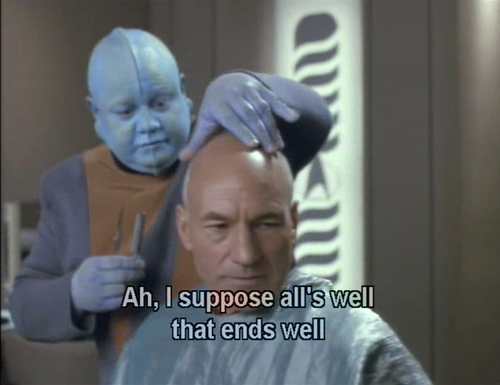Tyler Cowen's Blog, page 592
March 7, 2011
The Great Real Estate Recalculation
We will need to rethink where bookstores should go: not always in the higher-rent suburban locations, where Borders outlets were placed, but rather in out of the way fringes. Book lovers will have to drive for longer periods of time to do their browsing, or use Amazon.
Buildings should become taller, more densely packed in, and there is a chance of vertical farming.
Best Buy stores are too large. The NoVa landscape is already starting to be littered with empty big boxes. What will be put in them? How many current "stores" should evolve into "petting zoos" designed to complement the company's web sales operations?
Some parts of the suburbs should become quite empty, while some roads should become much wider and better maintained, accompanied by congestion pricing of course.
I've already stopped using Tysons Corner Shopping Mall, mostly because the combined activities of parking and walking take too long and involve too many hassles. The mall no longer offers convenient access to its nodes.
The dinky homes in Pimmit Hills, Falls Church will be replaced with much larger and newer boxes.
In so many sectors of the economy, Manhattan has become obsolete as a shopping center, replaced by the web.
Self-driving cars have the potential to fit many more cars on the road. Traffic will become less costly, as cars evolve into portable offices.
It is not hard to imagine how The Great Real Estate Recalculation should proceed. But it will take decades to occur, and there is a chance that we get only the "hollowing out" side of the story. In the meantime, land economics will rise in importance as a field of economics, whether or not the profession realizes it.

March 6, 2011
*The Social Animal*
The author is David Brooks and the subtitle is The Hidden Sources of Love, Character and Achievement. I pre-ordered my copy some time ago and it is due out this Tuesday...

Assorted links
1. How to make money? I'm not convinced.
3. Richard Freeman selects and discusses five books on labor unions.
4. The Facebook page for our Modern Principles text; it offers a steady stream of in-class resources.
5. Nicholas Kristof on Timur Kuran and Islam.
6. Should scientists be more Luddite? (pdf) An uneven but interesting piece.

Jobs of the Future
See also, Paul Krugman, Tyler, the NYTimes piece on lawyers rendered obsolete by computers and my earlier post In praise of impersonal medicine. What other jobs fall under these categories? (n.b. there are two jobs in the picture).

David Autor and the polarization of labor market outcomes
I was just going to write a post about David Autor as the "weighted average of most important yet most neglected economist for the blogosphere," or something like that. Yet Paul Krugman just did essentially that. In my view it is one of Krugman's best posts.
This may sound strange, but to think through these issues I spend some time playing chess against a computer, and also allied with a computer. It beats me, but I learn a lot from the experience and I'll be reporting on that.
By the way, there is quite a bit from Autor which Krugman didn't cover, you can pursue the material here on Autor's home page, start with the May 2010 CAP paper as the most accessible introduction.

Democracy in Deficit
Here is my New York Times column, which most of all explains what a prophetic thinker James Buchanan has turned out to be (and I thank Brad DeLong for reminding me of this, though he may not agree with my argument). This excerpt is not the main point, but it hints at how Austrian business cycle theory and Keynesian theories of fiscal illusion might be integrated:
The illusion is this: A government bond represents both a current asset and a future liability, yet for most people, those future tax payments feel less concrete and less real than the dollars they're holding in a money market account.
The field of behavioral economics analyzes imperfections in market decision-making, but the biggest practical problems often involve our inaccurate perceptions of what the public sector is up to and how much it will affect us.
In this case, the sorry truth is that our savings aren't worth as much as many of us think, and a rude awakening is coming. One way or another, some of our savings will be taxed away to make good on governmental commitments, like future Medicare benefits, which we currently are framing as personal free lunches.
In terms of driving sectoral shifts, and mismatching AD shocks to what the data call for, there is this:
Yes, some laudable cost controls on Medicare are embedded in the new health care law, but they're not enough. Most likely, we will end up making other spending cuts that won't solve our fiscal problems — and in areas that could instead benefit from Keynesian employment stimulus. These kinds of knee-jerk, poorly reasoned decisions are what happens when fiscal illusion reigns.
I also borrow Alex's point that we have not developed a workable Keynesian politics.
What to do? Time is no longer on the side of good. I suggest that we confront the nation's fiscal difficulties as soon as possible. That means both tax hikes and spending cuts, though I prefer to concentrate on the latter. Nonetheless it is naive to think spending cuts can do the job alone, and insisting on no tax hikes drives us faster along the path of fiscal ruin. The time for the Grand Bargain is now, it will only get harder:
Limiting Medicare and Social Security spending involves re-indexing benefits, adjusting eligibility ages, shifting the growth rates of costs and making other changes that have their full fiscal impact only over the longer run.
Here is a relevant post from Matt Yglesias. Here is an Andrew Sullivan post on debt as a moral issue. Here is a Jonah Lehrer post on how behavioral considerations, in particular loss aversion, make public sector debt harder to limit.

March 5, 2011
Assorted links
1. A skeptical take on recovery and private credit conditions.
2. Ugandan English.
3. Russ Roberts on Canadian income data. . And Arnold Kling, slouching toward the great stagnation. Via CFM, the McKenzie productivity study reflects evidence of the growth slowdown.
4. Pay the homeless.
5. Via Jonah Lehrer, how trivial choices suck us in and trick us (pdf).
6. Humans can use echolocation, and a fascinating story as well.
7. Robin Hanson and Karl Smith on AI, Bloggingheads.TV, self-recommending.

Markets in everything
Farmers get paid to let pet dogs herd their sheep.
For the pointers I thank Courtney Knapp and Renee DiResta.

More on GaddafiGate
His resignation came as a US consultancy admitted mishandling a multimillion dollar contract with Libya to sanitise Gaddafi's reputation in the west. Monitor Group, based in Cambridge, Massachusetts, organised for academics and policymakers from the US and UK to travel to Tripoli to meet the Libyan despot between 2006 and 2008, as part of a $3m (£1.8m) contract.
In a related development, the director of LSE has resigned, there is more here. Hat tip goes to Kieran Healy.

Galton's Bayesian Machine
Stephen Stigler has a cool piece on a machine that Francis Galton built in 1877 that calculated a posterior distribution from a prior and a likelihood function. Galton's originality continues to astound.
Here is Stigler:
The machine is reproduced in Figure 1 from the original publication. It depicts the fundamental calculation of Bayesian inference: the determination of a posterior distribution from a prior distribution and a likelihood function. Look carefully at the picture—notice it shows the upper portion as three-dimensional, with a glass front and a depth of about four inches. There are cardboard dividers to keep the beads from settling into a flat pattern, and the drawing exaggerates the smoothness of the heap from left to right, something like a normal curve. We could think of the top layer as showing the prior distribution p(θ) as a population of beads representing, say, potential values for θ, from low (left) to high (right)....
...the beads fall to the next lower level. On that second level, you can see what is intended to be a vertical screen, or wall, that is close to the glass front at both the left and the right, but recedes to the rear in the middle.
...The way the machine works its magic is that those beads to the front of the screen are retained as shown; those falling behind are rejected and discarded. (You might think of this stage as doing rejection sampling from the upper stage.)
...The final stage turns this into a standard histogram: The second support platform is removed by pulling to the right on its knob, and the beads fall to a slanted platform immediately below, rolling then to the lowest level, where the depth is again uniform—about one inch deep from the glass in front. This simply rescales the retained beads... the magic of the machine is that this lowest level is proportional to the posterior distribution!
Hat tip: The Endeavour.

Tyler Cowen's Blog
- Tyler Cowen's profile
- 843 followers





